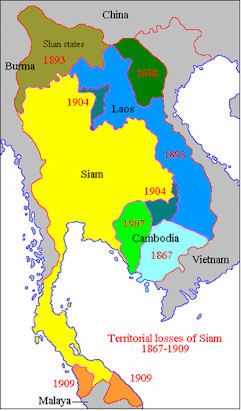

Zitierweise / cite as:
Payer, Alois <1944 - >: Chronik Thailands = กาลานุกรมสยามประเทศไทย. -- Chronik 1834 (Rama III). -- Fassung vom 2016-11-23. -- URL: http://www.payer.de/thailandchronik/chronik1834.htm
Erstmals publiziert: 2013-07-01
Überarbeitungen: 2016-11-23 [Ergänzungen] ; 2016-04-12 [Ergänzungen] ; 2015-05-09 [Teilung des Kapitels] ; 2015-05-08 [Ergänzungen] ; 2015-04-22 [Ergänzungen] ; 2015-03-16 [Ergänzungen] ; 2015-03-04 [Ergänzungen] ; 2015-01-24 [Ergänzungen] ; 2014-12-15 [Ergänzungen] ; 2014-11-13 [Ergänzungen] ; 2014-11-04 [Ergänzungen] ; 2014-10-27 [Ergänzungen] ; 2014-09-21 [Ergänzungen] ; 2014-08-20 [Ergänzungen] ; 2014-03-26 [Ergänzungen] ; 2014-03-08 [Ergänzungen] ; 2014-02-26 [Ergänzungen] ; 2014-01-13 [Ergänzungen] ; 2013-12-20 [Ergänzungen] ; 2013-12-05 [Ergänzungen] ; 2013-11-25 [Ergänzungen] ; 2013-11-05 [Ergänzungen] ; 2013-10-11 [Ergänzungen] ; 2013-09-28 [Ergänzungen] ; 2013-09-23 [Ergänzungen] ; 2013-09-17 [Ergänzungen] ; 2013-09-02 [Ergänzungen] ; 2013-08-23 [Ergänzungen] ; 2013-08-21 [Ergänzungen] ; 2013-08-14 [Ergänzungen] ; 2013-08-11 [Ergänzungen] ; 2013-07-13 [Ergänzungen] ; 2013-07-10 [Ergänzungen] ; 2013-07-08 [Ergänzungen]
©opyright: Dieser Text steht der
Allgemeinheit zur Verfügung. Eine Verwertung in Publikationen, die über übliche
Zitate hinausgeht, bedarf der ausdrücklichen Genehmigung des Herausgebers.
Dieser Text ist Teil der Abteilung
Thailand von
Tüpfli's Global Village Library
ช้างตายทั้งตัวเอาใบบัวปิดไม่มิด
|
Gewidmet meiner lieben Frau Margarete Payer die seit unserem ersten Besuch in Thailand 1974 mit mir die Liebe zu den und die Sorge um die Bewohner Thailands teilt. |
|
Bei thailändischen Statistiken muss man mit allen Fehlerquellen rechnen, die in folgendem Werk beschrieben sind:
Die Statistikdiagramme geben also meistens eher qualitative als korrekte quantitative Beziehungen wieder.
|
1834 - 1847

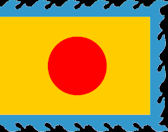
Rivalität zwischen Siam und Vietnam um die Oberherrschaft in Kambodscha.
1834


Der vietnamesische Kaiser Minh Mạng (明命, 1791 - 1841) über Kambodscha:
"To the Vietnamese emperor Minh Mang, writing in 1834, Cambodia was truly a "barbarian" country because "the people do not know the proper way to grow food. They use mattocks and hoes, but no oxen. They grow enough rice to have two meals a day, but they do not know how to store rice for an emergency."" [Quelle: Chandler, David P. (David Porter) <1933 - >: A history of Cambodia. -- 4. ed. -- Boulder : Westview, 2008. -- 365 S. : Ill ; 23 cm. -- ISBN 978 0 8133 4363 1. -- S. 121. -- Fair use]
1834

The Asiatic Journal unter dem Titel "Political state of Siam" über den Siamesisch-Laotischen Krieg 1826-1829
“ The expedition against Laos was successful. As usual in Siamese warfare, they laid waste the country, plundered the inhabitants, brought them to Bangkok, sold and gave them away as slaves. The prince Vun Chow and family made their escape into Cochin China; but instead of meeting with a friendly reception, they were seized by the King of that country, and delivered as prisoners to the Siamese. The King arrived in Bangkok about the latter end of 1828, and underwent there the greatest cruelties barbarians could invent. He was confined in a large iron cage, exposed to a burning sun, and obliged to proclaim to every one that the King of Siam was great and merciful, that he himself had committed a great error and deserved his present punishment. In this cage were placed with the prisoner, a large mortar to pound him in, a large boiler to boil him in, a hook to hang him by, and a sword to decapitate him; also a sharp-pointed spike for him to sit on. His children were sometimes put in along with him. He was a mild, respectable-looking, old grey-headed man, and did not live long to gratify his tormentors, death having put an end to his sufferings. His body was taken and hung in chains on the bank of the river, about two or three miles below Bangkok. The conditions on which the Cochin Chinese gave up Chow Vun Chan were, that the King of Siam would appoint a new prince to govern the Laos country, who should be approved of by the Cochin Chinese, and that the court of Siam should deliver up the persons belonging to the Siamese army who attacked and killed some Cochin Chinese during the Laos war.” [The Asiatic Journal and monthly register for the British and foreign India, China and Australasia. -- N.S. -- Vol XIII (1834). -- S. 175]
1834
Samanera Klan (สามเณร กลั่น) verfasst das Reisegedicht (นิราศ) Nirat Phra Thaen Dong Rang (นิราศพระแท่นดงรัง = Nirat Nen Klan - นิราศเณรกลั่น) über seine Pilgerreise zu einem Wallfahrtsort in Kanchanaburi (กาญจนบุรี).
Abb.: Lage von Ratchaburi [ราชบุรี] und Tha Ru'a [ท่าเรือ]
[Bildquelle: OpenStreetMap. -- Creative Commons Lizenz (Namensnennung, share alike)]
"Samanara Klan’s [สามเณร กลั่น] account of the river voyage from Ratchaburi [ราชบุรี] to Tha Ru'a [ท่าเรือ], three-quarters along the way to Kanchanaburi [กาญจนบุรี], provides some interesting details.
- The first village, some five kilometers distance from Ratchaburi was Ban Kluai [บ้านกล้วย], with pepper and yellow eggplant cultivation on both sides of the river.
Then followed four villages,
- Bang Kra [บางกระ], a small place in a wooded area,
- the larger Ban Čhet Samien [เจ็ดเสมียน],
- Bang Kham [บางขาม], and
- Bang Khayaeng [บางแขยง], where the travellers bathed and played on a sandy beach,
- before the town of Photharam [โพธาราม] was reached. This was the site of a large market where Chinese sold dishes with tea leaves, and one could find tamarind fruit in cocos oil, brought to this market by members of the hill tribes. There were baskets with kapok and cotton. Along the river Thai, Lao and Vietnamese fishermen had set up sheds for smoking fish, and at the edge of the town were sugar factories.
After Photharam followed a series of villages:
- Bang Lao [บางเลา], where villagers were cutting elephant grass,
- Nakho'n Chum [ชุม], in the woods,
- Ngiw Rai [งิ้วราย],
- Pak Raet [ปากแรด],
- Bang Phang [บางพัง],
- Wang Wan [วังวาน] (a Mo'n village of wood cutters),
- Tha Pa [ท่าป่า],
- and reached Wang Tho’ng [วังทอง], with houses on both sides of the river. This place had a vegetable market, catering to the many people passing is boats.
In the final stretch to Tha Ru'a [ท่าเรือ] the Samanera mentions three more villages:
- Wai Niw [หวายเหนียว],
- Tham Maka [ถ้ำมะกา], and
- Ban Ko' Chik [บ้านกอจิก], where pepper and cotton was cultivated.
- In 1834 there was a long row of bamboo rafts along the water edge at Tha Ru'a [ท่าเรือ ]."
[Quelle: Terwiel, Barend Jan <1941 - >: Through travellers' eyes : an approach to early nineteenth century Thai history. -- Bangkok : Duang Kamol, 1989. -- S. 94. --Thai-Namen ergänzt aus dem Originaltext des Nirat]
1834 - 1841
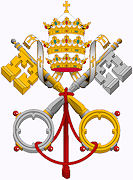
Der katholische Bischof Jean-Paul-Hilaire-Michel Courvezy (1792 - 1857) ist Apostolischer Vikar für Siam. Unter ihm erreicht die katholische Kirche Siams folgende Größe:
6590 Katholiken
11 europäische Priester
7 einheimische Priester
1834

Bericht französischer Missionare über Chantaburi (จันทบุรี).
Abb.: Lage von Chantaburi (จันทบุรี) und Kanchanaburi
[Bildquelle: CIA. -- Public domain]
"In addition to the two visitors' accounts of Čhanthaburi [จันทบุรี], there exists correspondence between resident Catholic priests and their headquarters in Paris. In the early 1830s, the war between the Siamese and Vietnamese dominates the local news. In 1834 Father Clemenceau personally saw the Siamese return from their incursions, loaded with booty, and the plight of the war captives filled him with compassion. Among these prisoners-of-war were almost two thousand Christians. Later most of these seemed to have been resettled in Kančhanaburi [กาญจนบุรี]. Throughout that year 1834 the people of Čhanthaburi expected a reprisal raid, and had to keep a number of troops in the region; one of the armies was stationed only "two gunshots' distance" from the priest's house. The district was reported to suffer much because of the war, even though the priest managed to protect his flock, by judiciously cultivating good relations with the army chiefs. Nevertheless, as a result of the war the Christians, and, we may assume, also many other inhabitants of Čhanthaburi, were overwhelmed with corvée tasks." [Quelle: Terwiel, Barend Jan <1941 - >: Through travellers' eyes : an approach to early nineteenth century Thai history. -- Bangkok : Duang Kamol, 1989. -- S. 187.]
1834/1835
Bau von Festungen in Chachoengsao (ฉะเชิงเทรา) und Samut Prakan (สมุทรปราการ).
Abb.: Lage von Chachoengsao (ฉะเชิงเทรา) und Samut Prakan (สมุทรปราการ)
[Bildquelle: OpenStreetMap. -- Creative Commons Lizenz (Namensnennung, share alike)]
1834
Sunthon Phu (สุนทรภู่, 1786 - 1855) verfasst das Reise-Gedicht Nirat (นิราศ) Nirat wat chaofa (นิราศวัดเจ้าฟ้า) zum Wat Chaofa in Ayutthaya (อยุธยา)
Abb.: Einbandtitel einer modernen Ausgabe
"At the Bang Sai [บางไทร] customs post, a sign announces tax collection.
Many bad fellow sit in the customs house,
Smoking ganja in a hookah, and licking sugar from their fingers.
They scold people, and threaten to ransack their boats.
If they find no contraband, they still demand
Papaya, dried shrimp, cucumbers, aubergines,
Oranges, and condiments like chilies and salt.
The boatmen are fed up and curse them silently."[Übersetzung: Nidhi Eoseewong [นิธิ เอียวศรีวงศ์] <1940 - >: Pen and sail : literature and history in early Bangkok including the history of Bangkok in the chronicles of Ayutthaya. -- Chiang Mai : Silkworm, 2005. -- 396 S. : Ill. ; 23 cm. -- ISBN 974957592X. -- Originaltitel: ปากไก่และใบเรือ : รวมความเรียงว่าด้วยวรรณกรรม และประวัติศาสตร์ต้นรัตนโกสินทร์ (1984). -- S. 185. -- Fair use]
Abb.: Lage von Bang Sai [บางไทร]
[Bildquelle: OpenStreetMap. -- Creative Commons Lizenz (Namensnennung, share alike)]
1834

Der katholische Misionar Jean-Baptiste Pallegoix (1805 - 1862) reist die Strecke Bangkok - Ayutthaya (อยุธยา) - Ang Thong (อ่างทอง) - Muang Phrom (Phrom Buri - พรหมบุรี) - Lopburi (ลพบุรี) - Muang In (In Buri - อินทร์บุรี) - Chainat (ชัยนาท) - Nakhon Sawan (นครสวรรค์)
Abb.: Bangkok - Ayutthaya (อยุธยา) - Ang Thong (อ่างทอง) - Muang Phrom (Phrom Buri - พรหมบุรี) - Lopburi (ลพบุรี) - Muang In (In Buri - อินทร์บุรี) - Chainat (ชัยนาท) - Nakhon Sawan (นครสวรรค์)
[Bildquelle: OpenStreetMap. -- Creative Commons Lizenz (Namensnennung, share alike)]Über die Reise Tha Rua (ท่าเรือ) - Phra Phutthabat (พระพุทธบาท):
Abb.: Lage vonTha Rua (ท่าเรือ) und Phra Phutthabat (พระพุทธบาท)
[Bildquelle: OpenStreetMap. -- Creative Commons Lizenz (Namensnennung, share alike)]
"When Pallegoix woke up, in the early morning of February 16, 1834, he noted how the river bank became crowded with princes, government officials, rich men, ladies, young girls and monks, all setting out for the overland journey to the Monastery of the Sacred Footprint. The poorer people set out on foot, but noblemen and other rich people travelled on elephant back. Davenport and Slafter each paid five-eights of a baht for the privilege to travel on an elephant. When Pallegoix first noticed this animated scene of pilgrims setting off on their way he did not join them, being en route to Saraburi further upriver, but in March 1834, when he passed Tha Ru'a [ท่าเรือ] on his return journey and noted that the many boats and throngs of pilgrims had disappeared, he decided to go and visit this famous monastery personally. After engaging a guide and an elephant, he set out on the road to the north. He was very surprised to find a good, brick- paved wide and straight road through the forests. On both sides of the way, "at every mile", there was a rest place and a well for pilgrims. Apparently this statement must not be taken literally, because other travellers mention resting places at much more irregular intervals. [...]
Around the foot of the monastery complex were long rows of bamboo stalls where things were sold that the pilgrims might need. When Pallegoix was there, outside the pilgrim season, he found the abbot busy overseeing the labour of a large number of workers. He reported that the "prince-abbot" was absolute master of the whole mountain and its environs for a distance of eight miles around. This abbot reputedly had four or five thousand men under his command, and could employ them to serve the monastery. Pallegoix noted also about twenty young girls working in the kitchen, and that the numbers of young men who served food were called pages, something not seen in other monasteries. Most of the travel accounts describe the setting of Phra Phutthabat [พระพุทธบาท
], on the slope of a beautiful rocky hill; however, a detailed enumeration of buildings, monuments, Buddha images, and decorations, does not concern us here."[Quelle: Terwiel, Barend Jan <1941 - >: Through travellers' eyes : an approach to early nineteenth century Thai history. -- Bangkok : Duang Kamol, 1989. -- S. 132 - 134.]
1834
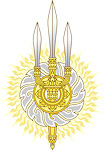


Rama III. schenkt den vietnamesischen katholischen Flüchtlingen in Bangkok Land für eine Kirche. Es wird die St. Francis Xavier Church (วัดนักบุญฟรังซีสเซเวียร์) aus Bambus gebaut. Diese wird 1837 von einem Sturm zerstört und durch eine Holzkirche ersetzt. 1858 wird eine Steinkirche gebaut. Die Bauzeit beträgt 10 Jahre. Die Kirche besteht bis heute (2013).
Abb.: Lage der St. Francis Xavier Church (วัดนักบุญฟรังซีสเซเวียร์)
1834
Wegen der Auseinandersetzungen mit Vietnam wird Chantaburi (จันทบุรี / จันกะบูย) befestigt.
Abb.: Lage von Chantaburi (จันทบุรี / จันกะบูย)
[Bildquelle: Map of Indo-China showing proposed Burma-Siam-China Railway. -- In: Scottish Geographical Magazine. -- 2 (1886)]
1834
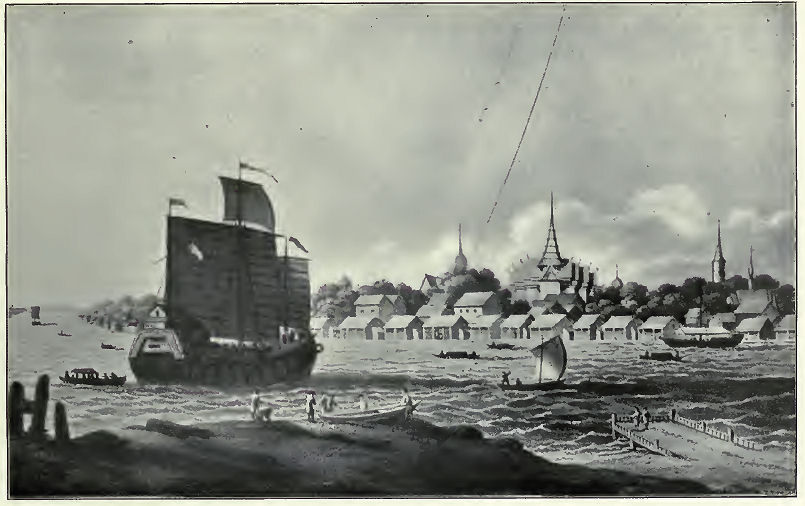
Abb.: Bangkok um 1834
[Quelle:
Twentieth century impressions of Siam : its history, people, commerce,
industries, and resources / ed. in chief: Arnold Wright. -- London [etc.] :
Lloyds, 1908. -- S. 51]
1834/1835
Kromamun Wongsanit (พระเจ้าบรมวงศ์เธอ พระองค์เจ้านวม กรมหลวงวงศาธิราชสนิท, 1808 - 1871) verfasst das Reise-Gedicht Nirat (นิราศ) Nirat Phra Prathom (นิราศพระปฐม) über seine Pilgerreise zum Chedi Phra Pathom (พระปฐมเจดีย).
Abb.: Lage des Chedi Phra Pathom (พระปฐมเจดีย์)
[Bildquelle: OpenStreetMap. -- Creative Commons Lizenz (Namensnennung, share alike)]
1834
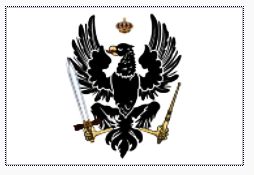
Es erscheint:
Gützlaff, Carl Friedrich <1803 - 1851>: Journal of three voyages along the coast of China : in 1831, 1832 and 1833; with notices of Siam, Corea and the Loo-Choo Islands / to which is prefixed an introductory essay on the policy, religion, etc. of China by W. Ellis. By Charles Gutzlaff. -- London : Westley [u.a.], 1834. -- 347 S.
Abb.: Titelblatt
"Siam has never received, so much as it ought, the attention of European philanthropists and merchants. It is one of the most fertile countries in Asia. Under a good government it might be superior to Bengal, and Bangkok would outweigh Calcutta. But Europeans have always been treated there with distrust, and even insolence, if it could be done with impunity. They have been liable to every sort of petty annoyance, which would weary out the most patient spirit; and have been subjected to the most unheard-of oppression. Some of them proposed to introduce some useful arts, which might increase power and riches; for instance, steam engines, saw mills, cannon foundries, cultivation of indigo and coffee; but with the exception of one Frenchman, their offers were all refused; and the latter had to leave the country in disgrace, after having commenced the construction of an engine for boring guns. When works for their benefit were accomplished, their value was depreciated, in order to dispense with the necessity of rewarding European industry, and of thereby acknowledging the superiority of European genius. The general idea hitherto entertained by the majority of the nation as to the European character, was derived from a small number of Christians, so styled, who, born in the country, and partly descended from Portuguese, crouch before their nobles as dogs, and are employed in all menial services, and occasionally suffered to enlist as soldiers or surgeons. All reproaches heaped upon them are eventually realized; and their character as faithful children to the Romish church, has been fairly exhibited by drunkenness and cockfighting. No industry, no genius, no honesty is found amongst them, with the exception of one individual, who indeed has a right to claim the latter virtue as his own. From this misconception has emanated all the disgraceful treatment of Europeans up to the time of the war between Burma and the Company. When the first British envoy arrived, he was treated with contempt, because the extent of English power was not known. When the English had taken Rangoon, it was not believed by the king, until he had sent a trustworthy person to ascertain the fact. Still, doubts agitated the royal breast as to the issue of the war with the invincible Burmans. Reluctantly did the Siamese hear of the victories of their British allies, though they were protected thereby from the ravages of the Burmans, who surely would have turned the edge of their swords against them, if the British had not conquered these, their inveterate enemies. Notwithstanding, the Siamese government could gladly hail the emissaries of Burmah, who privately arrived with dispatches, the sole object of which was to prevail upon the king of Siam not to assist the English, in case of a breach, upon the plea of common religion and usages. But the national childish vanity of the Siamese in thinking themselves superior to all nations, except the Chinese and Burmans, has vanished; and the more the English are feared, the better is the treatment which is experienced during their residence in this country. The more the ascendency of their genius is acknowledged, the more their friendship as individuals is courted, their customs imitated, and their language studied. His majesty has decked a few straggling wretches in the uniform of Sepoys [indische Soldaten], and considers them as brave and well-disciplined as their patterns. Chow-fa-nooi, desirous of imitating foreigners, has built a ship, on a small scale, and intends doing the same on a larger one, as soon as his funds will admit. English, as well as Americans, are disencumbered in their intercourse, and enjoy at present privileges of which even the favoured Chinese cannot boast.
The natives of China come in great numbers from Chaou-chow-foo, the most eastern part of Canton Province. They are mostly agriculturists; while another Canton tribe, called the Kih or Ka, consists chiefly of artisans. Emigrants from Tang-an (or Tung-an) district, in Fuhkeen province, are few; mostly sailors or merchants. Those from Hai-nan are chiefly pedlars and fishermen, and form perhaps the poorest, yet the most cheerful class. Language, as well as customs, derived from the Chaou-chow Chinese, are prevalent throughout the country. They delight to live in wretchedness and filth, and are very anxious to conform to the vile habits of the Siamese. In some cases when they enter into matrimonial alliances with these latter, they even throw away their jackets and trowsers, and become Siamese in their very dress. As the lax, indifferent religious principles of the Chinese do not differ essentially from those of the Siamese, the former are very prone to conform entirely to the religious rites of the latter. And if they have children, these frequently cut off their queues, and become for a certain time Siamese priests. Within two or three generations, all the distinguishing marks of the Chinese character dwindle entirely away; and a nation which adheres so obstinately to its national customs becomes wholly changed to Siamese. These people usually neglect their own literature, and apply themselves to the Siamese. To them nothing is so welcome as the being presented, by the king, with an honorary title; and this generally takes place when they have acquired great riches, or have betrayed some of their own countrymen. From that moment they become slaves of the king; the more so if they are made his officers. No service is then so menial, so expensive, so difficult, but they are forced to perform it. And in case of disobedience, they are severely punished, and, perhaps, put into chains for their whole lives. Nothing, therefore, exceeds the fear of the Chinese,—they pay the highest respect to. their oppressors, and cringe when addressed by them. Notwithstanding the heavy taxes laid upon their industry, they labour patiently from morning to night, to feed their insolent and indolent tyrants, who think it below their dignity to gain their daily bread by their own exertions. With the exception of the Hwuy Hwuy, or Triad society, implicit obedience is paid to their most exorbitant demands, by every Chinese settler.
Some years back, this society formed a conspiracy, seized upon some native craft at Bam- plasoi, a place near the mouth of the Meinam, and began to revenge themselves upon their tyrants; but falling short of provisions, they were forced to put to sea. Followed by a small Siamese squadron they were compelled to flee; till contrary winds, and utter want of the necessaries of life, obliged them to surrender. The ringleader escaped to Cochin-China, but most of his followers were either massacred or sent to prison for life. From that time all hope of recovering the nation from abject bondage disappeared ; though there are a great many individuals, who trust that the English (according to their own expression) will extend their benevolent government as far as Siam. Every arrival of a ship enlivens their expectations,—every departure damps their joy.
Great
numbers of the agriculturists in Siam are Peguans, or Mons (as they call themselves). This nation was formerly governed by a king of its own, who waged war against the Burmans and Siamese, and proved successful. But having, eventually, been overwhelmed, alternately, by Burman and Siamese armies, the Peguans are now the slaves of both. They are a strong race of people, very industrious in their habits, open in their conversation, and cheerful in their intercourse. The new palace which the king of Siam has built, was principally erected by their labour, in token of the homage paid by them to the " lord of the white elephant." Their religion is the same with that of the Siamese. In their dress, the males conform to their masters; but the females let their hair grow, and dress differently from the Siamese women. Few nations are so well prepared for the reception of the Gospel as this ; but, alas! few nations have less drawn the attention of European philanthropists.The Siamese are in the habit of stealing Burmans and making them their slaves. Though the English have of late interposed with some effect, they nevertheless delight in exercising this nefarious practice. There are several thousand Burmans living, who have been enslaved in this way, and who are compelled to work harder than any other of his majesty’s subjects. They are held in the utmost contempt, treated barbarously, and are scarcely able to get the necessaries of life.
Perhaps no nation has been benefited, by coming under the Siamese dominion, with the exception of the Malays. These Malays, also, are principally slaves or tenants of large tracts of land, which they cultivate with great care. They generally lose, as almost every nation does in Siam, their national character, become industrious, conform to Siamese customs, and often gain a little property. With the exception of a few Hadjis, they have no priests; but these exercise an uncontrolled sway over their votaries, and know the art of enriching themselves without injury to their character as saints. These Hadjis teach also the Koran, and have generally a great many scholars, of whom, however, few make any progress, choosing rather to yield to paganism, even so far as to throw off their turbans, than to follow their spiritual guides."
[Gützlaff, a.a.O., S. 31 - 38]
1834
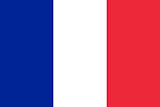
Der französische Chemiker Anselme Payen (1795 - 1871) entdeckt Zellulose als wichtigen Bestandteil von Holz. Dies ist die Grundlage für die Erfindung einer Vielzahl von Produkten wie Watte, Holzschliff-Papier usw.
1834-01-01
Inkrafttreten des Deutschen Zollvereins.
Abb.: Deutscher Zollverein 1834 - 1919
[Bildquelle: Pischdi / Wikipedia. -- GNU FDLicense]
1834-03-06 - 1834-05-21
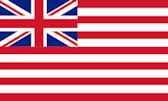
David Richardson (1796 - 1846), Arzt der britischen Honourable East India Company in Moulmein (မော်လမြိုင်မြို့), reist von Moulmein über Hot (ฮอด) nach Lamphun (ลำพูน), dort kommt er am 1834-04-01 an, verhandelt über die Lieferung von Rindern an die Garnison in Moulmein sowie über die Weiterführung der chinesischen Handelskarawanen bis nach Moulmein. Er wird vom Chao Hua (เจ้าอยู่หัว) empfangen, da der Chao Chiwit (เจ้าชีวิต) sehr krank ist. Vom 1834-04-16 bis 1834-04-24 darf er erstmals nach Chiang Mai (เชียงใหม่). Am 1834-04-30 verlässt er Lamphun.
Abb.: Lage von Moulmein (မော်လမြိုင်မြို့), Hot (ฮอด), Lamphun (ลำพูน), Chiang Mai (เชียงใหม่)
[Bildquelle: Map of Indo-China showing proposed Burma-Siam-China Railway. -- In: Scottish Geographical Magazine. -- 2 (1886)]
1834-08-01

Aufgrund des Slavery Abolition Act vom 1833-07-26 werden alle Sklaven im britischen Kolonialreich frei.
ausführlich: http://www.payer.de/thailandchronik/ressourcen.htm